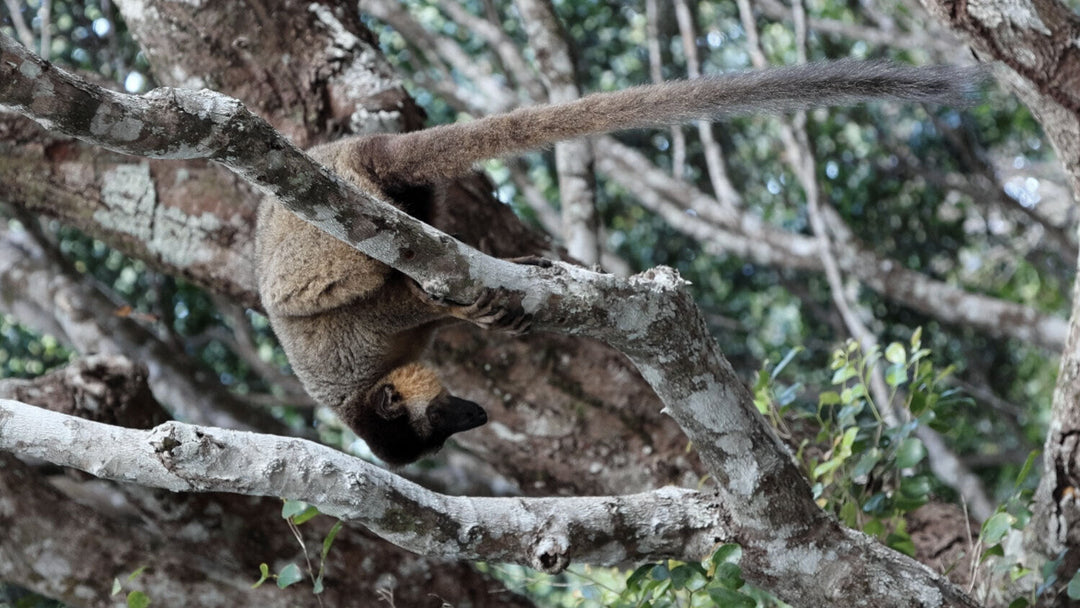Sequoia - searching for bears... [3/3]
The final part of three blog entries from NatureSpy Wildlife Biologist Hannah Henshaw, describing a quest for bears in three American National Parks. We’ve already had Yellowstone and Yosemite…
Our last stop was Sequoia National Park, covering 631.35 square miles with an elevation up to 14,494 feet, located in southern Sierra Nevada.
Home to some of the oldest and largest trees in the world and an array of wildlife including rattlesnakes, bobcats, mountain lions and black bears, it attracts just over 1 million visitors each year.

View from Hanging Rock, Sequoia National Park
We were staying half way up, close to popular trails, visitor information and rangers offices to glean as much as we could about finding bears in the park.
We climbed the 7,200 feet through steep and winding tracks in near pitch black darkness in light snowfall, grateful of having a jeep.
The shadows of the famous trees loomed overhead and we were excited to get up early to start exploring.
The next day we started off with the Sherman tree trail. A short paved route that winds through a grove of giant sequoia trees including the most famed of them all; General Sherman. Named after an American Civil War general, it measures 275 feet high and 25 feet in diameter.

The impressive General Sherman tree
Although not the tallest, widest or oldest tree, by sheer volume it is classified as the largest tree on earth, and with an impressive estimated age of between 2,300 – 2,700 years old.
We meandered our way through the giant forest spotting numerous birds who evidently appreciated the colossal size of these trees and the abundance of insects they contain.
This hopefully gives a little bit of perspective as to how big these trees are.

To show scale; these trees are huge!
We left the Sherman trail and headed to the visitor centre, picked up some maps and information and set off again on a hopeful hike into the giant forest which took us around and through these immense trees.
We noticed a lot of fire damage on many of the trees in this area as burning here plays a vital role in keeping a balanced ecosystem. Fire provides numerous functions.

A huge scorched sequoia trunk
It creates soft, nutrient-rich soil on which seeds can fall and be buried and covered, resulting in easy germination. It provides different age stages of development in vegetation, as well as different vegetation types.
It also cycles nutrients, can reduce the number of trees susceptible to attack by insects and disease and reduces fire hazards by fuel reduction.
Some types of vegetation even have hard seed coats that need fire to crack them in order for germination.
This means both the trees, vegetation and subsequently the wildlife are heavily reliant on fire.
Even in busy national parks, natural processes like this have to occur and so Sequoia NP has an active programme which aims to restore the role of fire here in a safe and managed way.
We hiked through the forest at a slower pace than normal as the altitude made our breathing a little laboured.

Walking through a split sequoia tree
We kept a look out for tracks and signs but to no avail. It grew darker so we had to abandon the trail for our lodge.
The next day marked the last of our attempts and chances at tracking and seeing a wild bear.
Colder temperatures up at this altitude meant the patches of light fall snow had compacted to ice which made walking conditions harder, but perfect for spotting potential tracks.
After over an hour of climbing, making our way through ice patches, puddles, burnt leaf litter and weaving through some of the biggest and oldest trees in the world there it was. In a small patch of snow. A bear track.

A clear bear track in the snow
We followed the direction it was pointing, hoping for signs in other sporadic areas of snow and sure enough there they were; lots of tracks.
They appeared to be a mother with at least one cub as there were smaller bear tracks haphazardly weaving around, over mounds and logs and then doubling back to follow the main, larger tracks which seemed to be assiduously following the path.

Mother and cub bear tracks in the snow
Some of the smaller tracks stopped abruptly around the base of a tree so we made sure to also scan above us, as unlike grizzly bears whose claws are long and blunt to aid digging, the toes of black bears point inwards which helps them to climb.
We followed the tracks steadily down towards the main trails, even across a public footbridge, until the snow patches became infrequent and it became harder to identify tracks in the sodden mulch of the trail.
We were almost back to where we had started, coming full circle.
Our bear quest had come to an end.

Slow down for wildlife!
Thrilled to have finally been able to follow in the footfalls of bears, but somewhat dissatisfied we still hadn't managed to see a wild bear for ourselves, we proceeded to drive back to our lodge and pack up for the last time.
There were resurfacing works on the road back and we were stuck in a line of traffic. We had been there sometime when there was a bit of commotion from a few cars back.
Murmurs of a bear sighting. Then a shout and there it was.

Spot the bear!
Weeks of travelling, hiking and tracking and now we saw a bear.

A fleeting glimpse
Running passed the side of the road as we sat in the car… Nevertheless we achieved our goal and got a (blurry!) photograph of wild black bear.
We headed home, grateful and happy.


